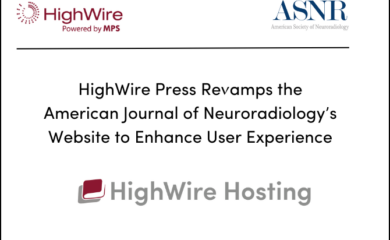From the early days of ‘cascading workflows’ to today’s sophisticated systems, the journey of manuscript transfers in scholarly publishing reflects a significant evolution. This shift is not just about retaining high-quality research within a publisher’s ecosystem; it’s about enhancing the experiences of authors and reviewers, streamlining processes, and fostering a more efficient scholarly communication landscape.
In a recent HighWire Press webinar, industry experts including Sven Molter, Mark Richards, Duncan Macrae, and Satam Choudhury, shared their insights on this dynamic aspect of publishing. Their discussions shed light on the various transfer workflows, their impact on the scholarly community, and the emerging trend of integrating transfers from preprint servers.
Let’s get started.
Sven Molter on Manuscript Transfer Process at PLOS
The Evolution of Manuscript Transfer
Sven Molter, a seasoned product manager at PLOS, brings a wealth of experience from his tenure at Clarivate’s Scholar One. His journey in the scholarly publishing world has been marked by significant roles, notably as a product lead for scholarly manuscripts. At PLOS, Sven’s focus has been on refining the manuscript transfer process, a critical aspect of the publishing workflow.
The Transfer Process: Understanding the Scope
PLOS’s approach to manuscript transfer is deeply rooted in its history and mission. Originating in 2001 from a commitment to open science, PLOS has grown into a diverse portfolio of 12 journals. Understanding this portfolio is key to grasping their transfer process. The journals range from broad-scope, highly selective ones like those in biology and medicine, to more field-specific and curated journals. This diversity necessitates a nuanced transfer process.
The Direction of Transfers
Transfers primarily flow towards the multidisciplinary PLOS One, away from the more specialized journals in medicine and biology. This trend reflects the journals’ selectivity and scope. While transfers to medicine and biology are rare due to their high standards, transfers between other journals are more common, facilitating a wider dissemination of research across various fields.
Decision-Making in Transfers
The decision to transfer a manuscript lies with the staff editors, although academic editors can recommend transfers. This decision can occur at any stage, from initial submission to later in the review process. The goal is to identify transfer candidates early, ensuring a smooth transition and maintaining the manuscript’s integrity.
Why Manuscripts are Transferred
Two primary factors influence the decision to transfer a manuscript: quality and scope. A manuscript might be transferred if it doesn’t meet the quality standards of a highly selective journal but fits well with another journal like PLOS One. Similarly, scope plays a crucial role; a manuscript might be more suited to a journal with a specific focus, ensuring it reaches the appropriate audience and receives expert review.
The Transfer Workflow
The transfer process involves several steps, starting with the decision to transfer (often following a rejection from the initial journal) and the author’s acceptance of this decision. The transfer includes moving essential information to the destination journal, a task that involves both automated systems and manual input by staff. This process ensures that the manuscript aligns with the new journal’s focus and requirements.
Communication and Author Experience
Effective communication with authors is vital during the transfer process. Authors receive guidance and feedback on necessary changes to their manuscripts. Templates and clear instructions are used to streamline communication, reducing the workload on staff and enhancing the author’s experience.
Challenges and Future Directions
The transfer process is not without its challenges. Aligning the submission requirements of different journals, managing duplicate data entry for authors, and ensuring clear communication are ongoing areas of focus. PLOS is continually working to refine these processes, aiming for a more seamless and efficient transfer system.
Integrating Pre-prints in the Transfer Process
An exciting development in PLOS’s approach is the integration of pre-prints. Collaborations with platforms like BioRxiv and MedRxiv facilitate the direct transfer of pre-prints to PLOS journals. This initiative aligns with PLOS’s commitment to open science, offering authors additional avenues for disseminating their research.
Innovations in Article Transfer Service – Insights from Mark Richards
The Evolution of BMJ’s Article Transfer Service
With two years of experience in this role, Mark Richards, BMJ’s Article Transfer Service Manager has witnessed and contributed to the significant transformation of the article transfer process.
From Transfer Editor to Service Expansion
Initially appointed as a Transfer Editor for BMJ’s flagship journal, Richards’ role expanded to encompass all BMJ titles. This evolution reflects the growing need for a more efficient and author-centric transfer system across various scientific publications.
BMJ’s Diverse Journal Portfolio
Richards provided an overview of BMJ’s extensive journal portfolio, which includes gold open access journals, diamond journals primarily based in China, traditional hybrid journals, and a unique fellowship journal. This diversity in publication models underscores BMJ’s commitment to catering to a wide range of scientific communities and research needs.
Streamlining the Transfer Process
There are two main transfer routes at BMJ:
- Rejected Transfer Decision: This route is activated when an article, after peer review, is deemed unsuitable for one journal but potentially fit for another within BMJ’s portfolio. The process involves a decision letter with a link for authors to accept or decline the transfer, ensuring a seamless transition of the manuscript and associated reviews to the next journal.
- Alternative Journal Route: Authors can select an alternative journal during submission. If rejected from the first choice, the manuscript is automatically transferred to the alternative journal, again ensuring a smooth transition.
These methods emphasize BMJ’s focus on reducing redundancy and streamlining the publication process for authors.
Enhancing Author Services
Richards stressed the importance of viewing article transfers as a crucial author service. By adopting an evidence-based and data-driven strategy, BMJ aims to make the transfer process more efficient, saving authors valuable time and effort.
The Role of Editors in the Transfer Process
A significant challenge in the transfer process is engaging editors to care about transfers. Richards discussed strategies to build relationships between editors of different journals, emphasizing the benefits of transfers to authors and the scientific community. This approach aims to foster a more collaborative and supportive editorial environment.
Impact and Data-Driven Strategies
Richards concluded with the importance of a data-driven approach in refining the transfer service. By analyzing transfer patterns, author feedback, and the impact of transferred articles, BMJ continually adapts its strategies to better serve the scientific community.
Navigating the Complexities of Manuscript Transfers: Insights from Duncan McRae’s Perspective
Duncan McRae’s presentation at the webinar provided an in-depth exploration of the evolving landscape of manuscript transfers in academic publishing, particularly from his vantage point at Wolters Kluwer.
Initial Vision and Evolution
McRae’s journey began with the ambitious goal of launching a multidisciplinary open access journal aimed at dominating the market. This vision introduced Wolters Kluwer to the concept of populating a journal primarily through transfers from other journals within its network. Although the initial plan of relying solely on transfers evolved, it laid the groundwork for a more nuanced approach to manuscript transfers.
Technical and Strategic Challenges
The implementation of a transfer system across numerous journals presented both technical and strategic challenges. Wolters Kluwer, with its mix of proprietary and society-owned journals, had to navigate the complexities of integrating a transfer system that catered to the unique needs and policies of each journal. This process involved customizing rejection emails and deciding which journals would participate in the transfer process. The strategic aspect was further complicated by the varying interests of society journals, some of which had their own open access journals or future plans that conflicted with the transfer initiative.
Editorial Resistance and Ideological Challenges
A notable challenge highlighted by McRae was the resistance from some editors who were ideologically opposed to the concept of transfers. This resistance stemmed from a belief that a rejection should be the final verdict for a manuscript, a viewpoint that overlooks the potential of a manuscript to find a suitable home in another journal.
Data-Driven Insights and Transfer Dynamics
McRae provided a data-driven analysis of the transfer process, revealing interesting trends and outcomes. A significant portion of authors who initially accepted the transfer offer did not complete the process, highlighting the need for transparency and clear communication about the expectations and requirements of the target journal. This aspect underscores the importance of managing author expectations to ensure a smooth transfer process.
The Impact of Transfers on Journal Ecosystems
Transfers were not just a one-way street to the multidisciplinary open access journal but also occurred between proprietary titles, society journals, and their spin-offs. This complex web of transfers illustrates the multifaceted nature of the manuscript transfer system and its potential to enrich various segments of the publishing landscape.
Future Directions and Considerations
Looking ahead, McRae emphasized the need to refine the transfer process further. This includes addressing the challenges posed by differing submission guidelines across journals, exploring the role of AI in streamlining transfers, and considering the human element in managing these processes. The goal is to create a more universally adopted transfer system that benefits all journals within the Wolters Kluwer portfolio.
Closing Thoughts
The insights from the HighWire Press webinar, featuring experts from PLOS, BMJ, and Wolters Kluwer, underscore a key evolution in scholarly publishing: the refinement of manuscript transfers. This evolution is pivotal, focusing on improving author and reviewer experiences and streamlining scholarly communication. The adoption of the Manuscript Exchange Common Approach (MECA) and the integration of preprints are significant strides towards a more efficient and transparent system. As we move forward, the challenge lies in maintaining this efficiency while ensuring the system remains adaptable and responsive to the needs of the scholarly community.



